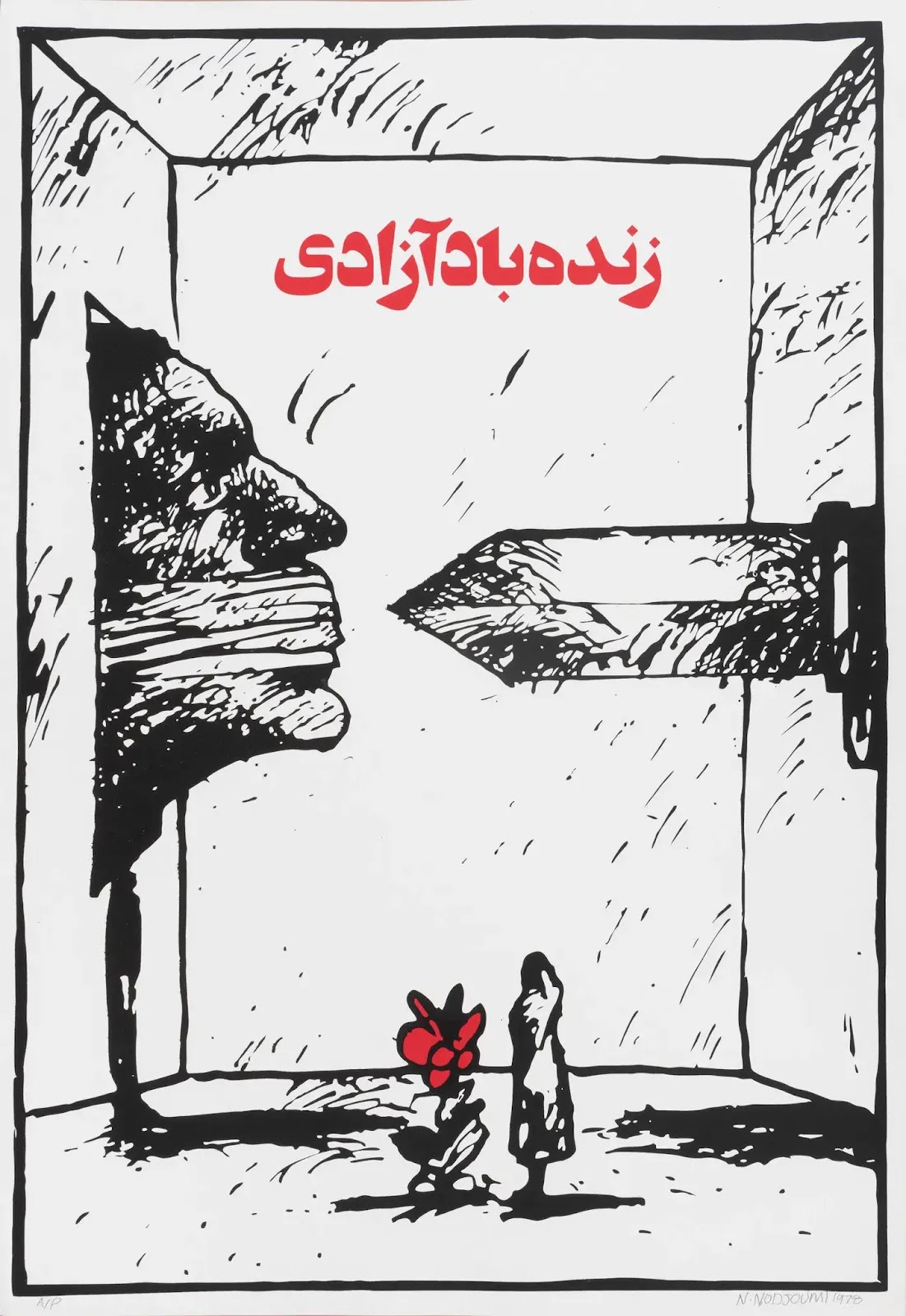The artwork I have chosen is the 6th article image in the reading “The 25 Most Influential Works of American Protest Art Since World War II” by The New York Times. This image is by Nicky Nodjoumi titled “Long Live Freedom,” in 1978. I chose this artwork because of its style. The lack of color and form of artistry are intriguing to me. This post is about the persecution of Persian culture and other wrongful imprisonment of dissidents in the year of 1978, a situation that continues today. The picture portrays a bayonet crashing into a prison cell to threaten a gagged inmate. The artist, Nicky Nodjoumi, actively creates works that portrait this animosity from Iran to Brooklyn.
In the first reading of “WHY ARTISTIC ACTIVISM?” The first quote which I pulled out of part 4 of the reading “Artistic Activism Creates Openings” says “Artistic Activism’s ability to escape easy categorization is a benefit in societies where protest is commonplace. Whereas traditional forms of protest, like marches, need to constantly increase in size or scope, or descend into violence, to become noticed (and newsworthy), the creative innovation at the heart of artistic activism provides something uncommon, or out of place, that can attract attention and become memorable.” and to summarize this quote goes along with the article. This quote explains the passivity of Artistic Activism which means it can be used more thoroughly and frequently, bringing a more positive end result where it is more politically reachable and artistically exposed.
The second quote from this article is from the 6th part called “Artistic Activism Stimulates a Culture of Creativity and the quote is “Millions of people may have marched in the streets protesting the American War in Iraq, but public sentiment turned against the war when the mother of a dead soldier – Cindy Sheehan — staged a dramatic encampment outside the president’s vacation home. This was artistic activism.”. This quote shows one way we can use artistic activism as described in the text. Also, showing how artistic activism can be a result of a public protest. Turning from something more physical and potentially violent to something non-violent, peaceful, and can still get the same message across!
The first quote from the reading “An Introduction to Activist Art” by Stefanie Graf, is found in number two’s “Create Awareness”. It says “When the public is looking away from suffering that could be prevented or does not want to be confronted with it, activist art often creates a dialogue and forces people to think about these problems.”. In reference to the dangerous journey of refugees trying to reach Europe. As many of these paintings are based in older times, this one in particular is based only in 2017, showing that artist activism is still in the works today.
The second quote found in this article is within the activist art “Love is in the Air” by Banksy. Towards the end of that paragraph explaining the art a bit, “With the apparent message calling for flowers instead of violence, the work has often been interpreted as a call for peace.”. This sentence is actively informing the reader of the art and the result of it. Peace is being pressed after and the protests are live towards the wall that blocks the Palestinian minority from the Jewish Israeli population, it should not be there! This very cool and passive piece of art is to show the consequences of these activities.
The first quote I have chosen from the reading of “The 25 Most Influential Works of American Protest Art Since World War II” by The New York Times was after the image of “Faith Ringgold, ‘United States of Attica’, where after the article there are a few lines from the writers of the article and guest. The question was asked by TFL to Nikil Saval “Nikil, what do you think protest art is?” and in her answer she says “It’s protest art not just because of what happened in Attica but also because it is a history of American violence.” relating to why America was called “United States of Attica” by Ringgold on the prison system being as mistreated as it is. This quote summarizes what protest art is if I were to describe it myself. I can relate to that quote.
The second quote in this article I have chosen is the 6th reading which is titled “Nicky Nodjoumi, “Long Live Freedom,” 1978”. The quote is in relation to the reading “It’s easy to see parallels to the current morass in American politics.” towards the end. This quote reveals the amount of chaos that we can see in politics from then that lasts until today. If unsettled or uncontrolled it can unravel into bigger chaos, and even wars!

No comments:
Post a Comment